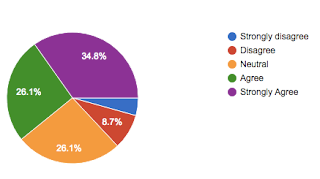Graeme Aitken, the Dean of Social Work at Auckland University, presented to the Manaiakalani leaders a few weeks ago, and a video of his presentation on Collaborative Inquiry was shared with our Community of Learning cohort to further our understanding of Inquiry, espeically when it comes to the fundamental portion of our Inquiry under Learn: Scan.
Here are a few snapshots that I found interesting while listening to Dr. Aitken's presentation.
-You will only be an effective teacher if you know what you are trying to achieve. It is important to figure out what you are going to do to teach your students in a way that enbles them to acheive the goals you have for them. Also, an effective teacher needs to spend time reflecting on the process and doing what they need to do to make it better and more effective for future lessons, while remembering that it is often the teacher that needs readjusting, not necessarily what the students are doing.
-Inquiry is an ongoing, continuing process. It is not an individual activity around one big idea.
This makes me so happy to be part of the Manaiakalani CoL team, and to be part of the discussions that we are able to take part in during our CoL meetings.
-Teachers are only trying to acheive three things: more interest/enjoyment, more confidence, more achievement scores.
-Part of your SCAN should be all about your data, and what it is telling us about who is doing well and who is not doing well (this also has to be about what the teacher is achieving or not achieving). Part of the 'Data Story' is also about how well the teacher is doing.
-Engagement SCAN involves questions similar to the following:
- Can our learners answer the question, “where are you going with your learning?”
- Can they describe what they are learning and why?
- How can they demonstrate what they are learning?
-A SCAN survey should not take more than 3 minutes to complete or you will loose student interest.
-Collaborative Inquiry does not mean finding a problem and immediately offering a solution. It means sitting down with a group from staff (or the staff as a whole) and try to come up with various ways to fix the problem that can be tested out to find correlations.
-When finding a 'solution' it really is just a hunch that reveals a different way to achieve the goal, which may actually end up being something that the teaching staff needs to learn to do in order to raise student understanding.
-Medicine works because doctors and researchers share what they have learnt and discovered. Educators have not always worked this way. We need to stop critiquing and create a culture where we learn from each other, through our successes and our failures.





